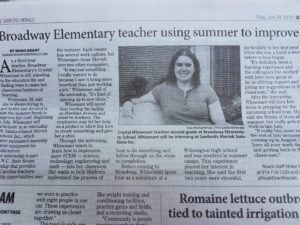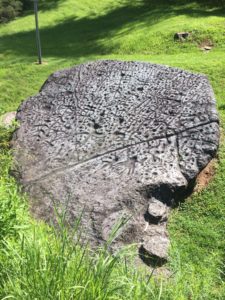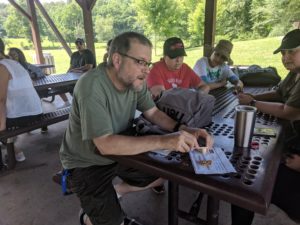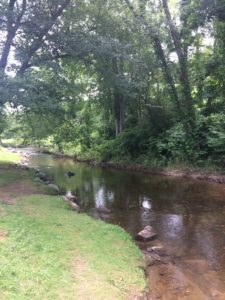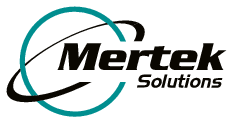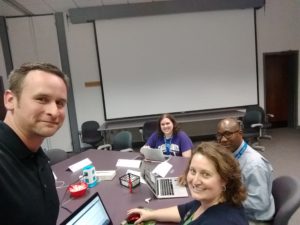
The most interesting moment for me was when I was able to speak with the welder. He explained everything to me about what he does, which I learned relies highly on math. He even gave me a mini math lesson, which involved a good amount of math that I had not heard since high school. I remember many people saying “we don’t need to know this, because we’ll never use it.” They were definitely proven wrong. It was amazing to see how what we learn in school does come into play later on in life. I was also amazed that I was actually able to remember how to find the area of a circle. 🙂
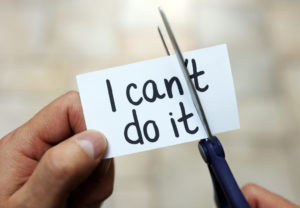 I think the one of the biggest challenges a teacher faces is taking something new and trying to find a way to incorporate it into the curriculum. It was a little bit of a struggle for me, because the information I learned was so advanced for second grade. However, it did become easier once I started to focus mainly on the process. The process I learned can be simplified into easy to understand language and examples. However, I did not want to just push all the other information I learned to the side. Students will benefit from not just knowledge of the process, but also knowledge of what each job is and how it gets done. I think it will help students understand the assembly process, as well as, give them insight to what could possibly be a future career for them.
I think the one of the biggest challenges a teacher faces is taking something new and trying to find a way to incorporate it into the curriculum. It was a little bit of a struggle for me, because the information I learned was so advanced for second grade. However, it did become easier once I started to focus mainly on the process. The process I learned can be simplified into easy to understand language and examples. However, I did not want to just push all the other information I learned to the side. Students will benefit from not just knowledge of the process, but also knowledge of what each job is and how it gets done. I think it will help students understand the assembly process, as well as, give them insight to what could possibly be a future career for them.

The biggest take away for me is how much of the assembly process involves collaboration. It was amazing to be able to walk through the process from start to end and see how each group worked together to assemble one machine. In my classroom I am always trying to foster collaboration. The students learn to work together to complete an assignment, as well as, how to peer review other students writing. It is a skill that students will need in the real world to succeed. I think it will help the students to see and hear about how effective collaboration can be. It will help the students when they have to collaborate during the project.


